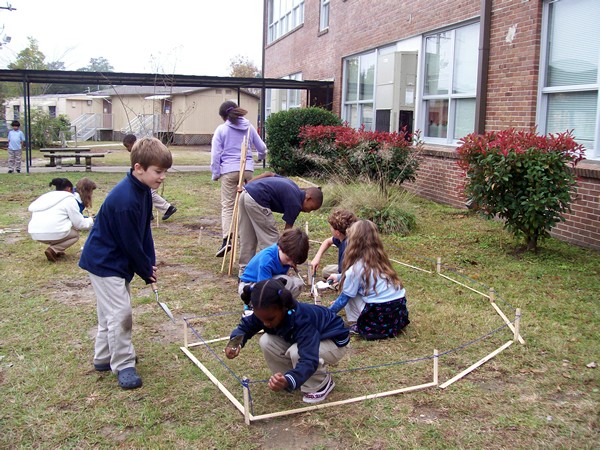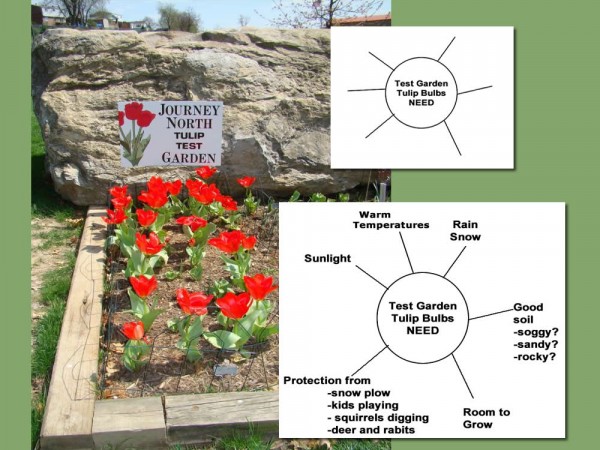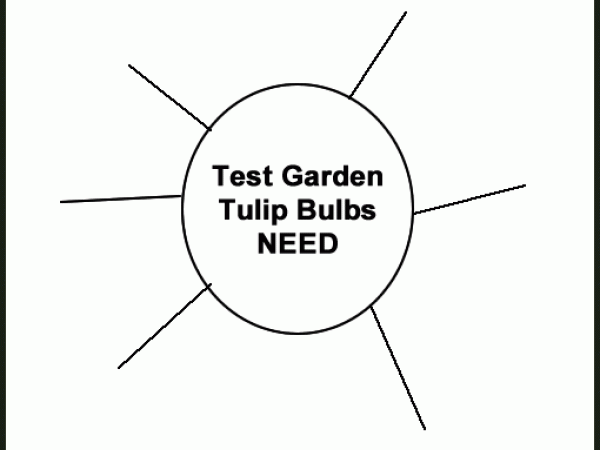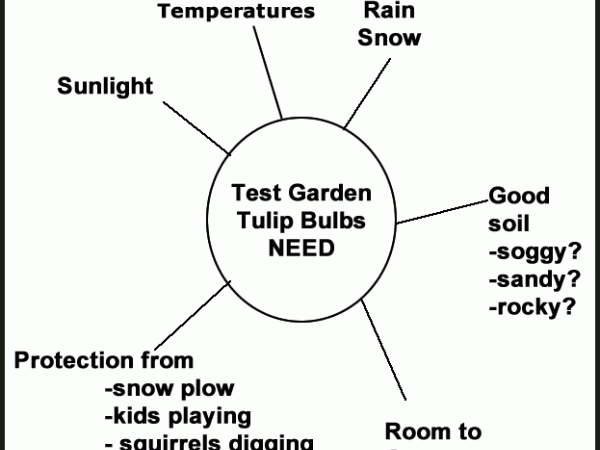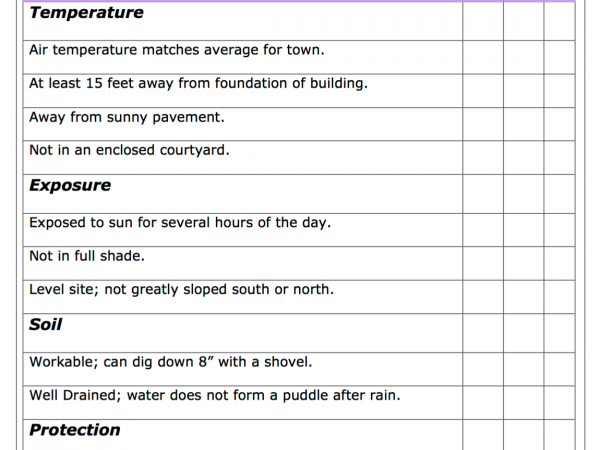Where Should We Plant?
Predicting, Comparing, and Selecting a Test Garden Site
1. Predict What Tulips Need
Before revealing the protocol for planting a tulip test garden, use the webbing graphic to review what plants need: sunlight, water, soil, space, protection. Pose questions about what tulips may need: Full sun? Full shade? Part sun/part shade? Type of soil? How much water from rain, snow, other? How far apart would you plant bulbs? How can the bulbs be protected from predators or extreme weather conditions? Assess students' background knowledge by encouraging them to share their thoughts and predictions.
2. Compare Possible Planting Sites
Place students in small groups. Take them outside with pencils and notebooks to explore possible planting sites. Have each group find a spot they think would be a suitable site for a tulip garden. (Be sure to specify off-limit areas.) Have them sketch a simple map of their site. Be sure they label their sketch with descriptive words that reveal reasons for choosing their site: sunlight? water? soil? space? protection? Have each group present their sketch and describe how they think their chosen site will provide suitable conditions for tulips. Encourage the class to listen without evaluating predictions.
3. Reveal Rules and Rate Sites
Students use the checklist to rate sites they predicted would be suitable for tulips. If necessary, go outside to consider other sites that would meet garden protocol. Explain that kids around the Northern Hemisphere will use this same checklist when they are choosing where to plant their test garden. Explain the importance of the protocol: Many variables can affect when tulips will emerge and bloom. The protocol controls variables that would affect early or delayed blooming. Each test garden is planted in a site that is suitable for plant growth and best represents the climate of the region.
4. Select a Site
Choose the site that best meets garden protocol and best represents the climate of your region. Review goals: When tulips emerge and bloom at different times in different climate zones, we can track the arrival of spring as it sweeps across the Northern Hemisphere. Over time, test gardens can help us see how climate change affects plant growth. Commemorate the occasion by designing a sign or stake for the garden.
5. Pose New Questions
Wrap up the activity with new questions:
- What measurement tools would reveal useful data about our test garden? (thermometers to test air and soil temperatures, rulers to determine depth and spacing when planting, rain gauge, anemometer or windsock to measure wind speed and direction, etc.)
- Look at a map of the Northern Hemisphere. Where do you predict the first tulips will emerge and bloom this spring?
- How will our underground tulip bulbs survive in the winter? What happens to bulbs when winter temperatures arrive?
- What do you think would happen if we planted tulips in areas that don't meet some or all of the protocol?

